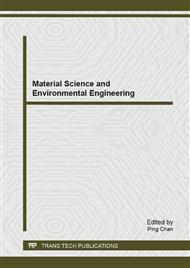p.632
p.639
p.646
p.652
p.659
p.663
p.669
p.679
p.686
Multi-Scale Analysis of Marine Environmental Situation in the Caofeidian Nearshore District
Abstract:
Analysis of marine environment, especially the multi-scale analysis is an efficient means to obtain the environmental situation and guide the environmental management. In this paper, the field data, max, min and average of dissolved inorganic nitrogen (DIN) and phosphate in the Caofeidian marine district, Tangshan Bay is analyzed. The whole water quality situation could be grasped through these analyses. The research results show that the distribution of pollution is disequilibrium and the high value district of pollution exists in research district too.
Info:
Periodical:
Pages:
659-662
Citation:
Online since:
May 2014
Authors:
Keywords:
Price:
Сopyright:
© 2014 Trans Tech Publications Ltd. All Rights Reserved
Share:
Citation:


